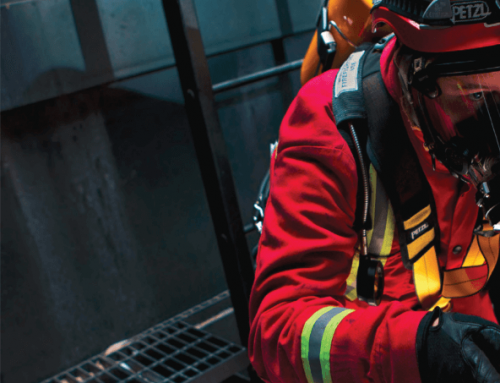Immediately Dangerous to Life and Health
We have said that hydrogen sulfide is a toxic gas. This means that this gas can be deadly. One term we use for this gas is Immediately Dangerous to Life and Health, or I. D. L. H.
When we discuss the toxicity of H2S, we will use the term ppm or Parts per Million. Incidentally, does everyone here understand what we mean by part per million? If we say one part per million we are saying that we have one molecule of hydrogen sulfide mixed in one million molecules of breathing air, by volume.
Another way of looking at this is:
One second in 11 ½ days, one inch in 15 ½ miles in distance, or 2.5 centimeters in 24.5 Kilometers.
One Percent of H2S by volume in the atmosphere equals 10,000 parts per million.
We can smell Hydrogen sulfide in quantities as little as one ppm. H2S can kill you in quantities as little as 700 ppm.
When we speak of density we are talking about the weight of the gas. You might think that it is very light. But we are talking about its weight as compared to the ambient air. (Ambient means the free air in the atmosphere around you.) Hydrogen Sulfide is heavier than air. If the air around you has a specific gravity of 1, then H2S has a specific gravity of 1.189.
This is one of the characteristics of H2S that we use to our advantage. H2S is heavier than air so it will travel with the wind. When there is no wind it will tend to find the lowest point possible to settle in. So if we know the wind direction, we can determine where the gas will spread.
WARNING!! Even though this gas is heavier than air, there are still some reasons why it will not always immediately settle. If the gas is warmer than the surrounding air, it will tend to rise. If the gas is under pressure, it will go wherever the pressure directs it.
Hydrogen Sulfide is easily diluted by air movement because the volume of air to H2S changes more rapidly than it would in still air. We use the wind direction to our advantage, so knowing the wind direction is very important to us. We can detect wind direction by use of:

You must always remember to move upwind or crosswind (if you cannot move upwind due to circumstances). Breathing apparatus, detection equipment, and the safe briefing areas are placed with prevailing wind direction in mind. Wind direction and movement can be your best friend when dealing with H2S.
Because H2S is heavier than air, it has a tendency to “Stack” or displace air to higher levels in areas of poor ventilation. This is the reason we use artificial ventilation or “Bug-Blowers” in areas where wind movement might be non-existent, or if we are trying to move the gas away from our work area.
ALWAYS BE AWARE OF WIND DIRECTION. H2S WILL MOVE WITH THE WIND AND TEND TO COLLECT IN LOWER AREAS.

